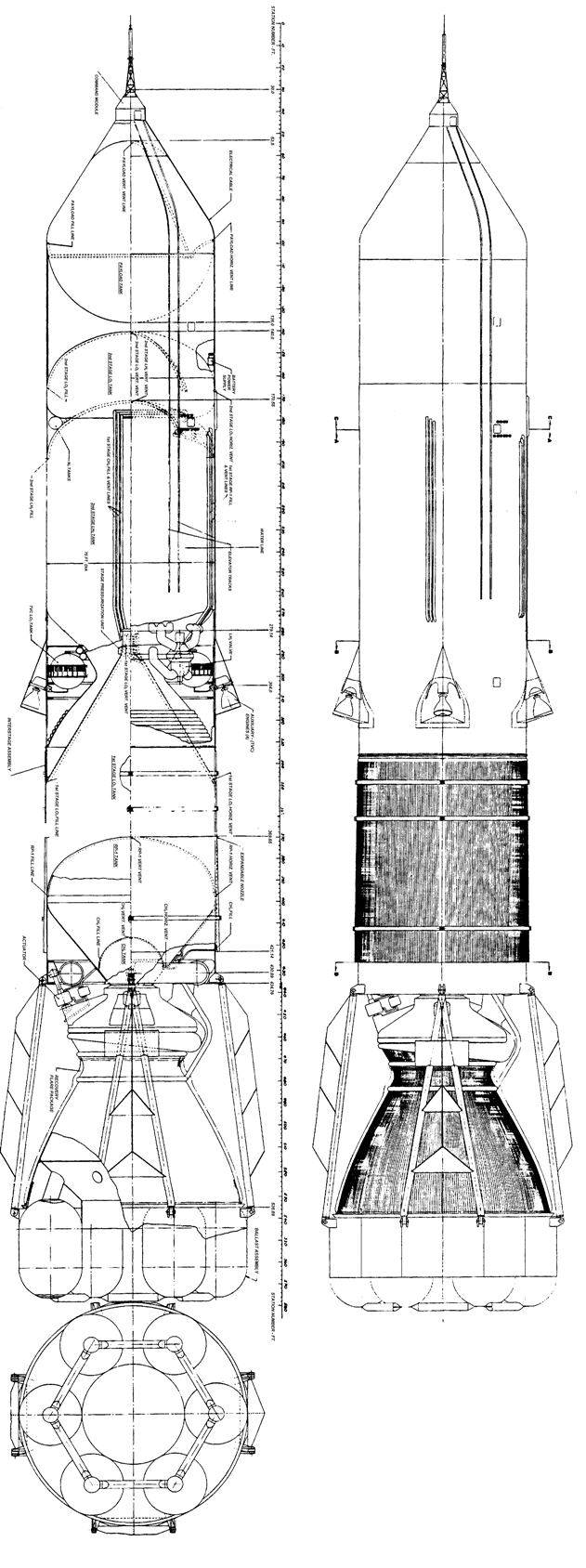Winston
Lorenzo von Matterhorn
- Joined
- Jan 31, 2009
- Messages
- 9,560
- Reaction score
- 1,748
A fascinating interview video with Emory Stagmer, Northrop Grumman Senior software and systems engineer who describes Bob Truax's giant, but designed to be super simple Sea Dragon launch vehicle concept from the 60s in detail. BTW, note the valid critique of winged reusable launch vehicles:
Bob Truax's Sea Dragon
VAXHeadroom (Emory Stagmer) joins us in-studio to talk about the old Saturn V competitor: Sea Dragon. Capable of lofting 1.1 million LBS to Low Earth Orbit, this 1/2 submarine 1/2 rocket system would dwarf anything humans have ever built to date. What is it and how did it work?
How loud?: 165 dB at five miles, one of the several reasons it would have been launched at sea. The rocket would have been able to carry a payload of up to 550 metric tons (1.1 million pounds) into low Earth orbit, approximately half that to the moon. Payload costs were estimated to be between $59 to $600 per kg.
https://en.wikipedia.org/wiki/Sea_Dragon_(rocket)
[video=youtube;GSztpzD_JjQ]https://www.youtube.com/watch?v=GSztpzD_JjQ[/video]

Another great interview:
Emory Stagmer Future of Small Sats Interview Segment
[video=youtube;gdZ_IQY-4PY]https://www.youtube.com/watch?v=gdZ_IQY-4PY[/video]
Watching that led me to this newish propulsion tech which he said was extremely promising:
Iodine Propellant Space Propulsion
https://erps.spacegrant.org/uploads...icledownload_1988-2007/2013index/xi1i0x3l.pdf
[video=youtube;T0XRB5hMXS0]https://www.youtube.com/watch?v=T0XRB5hMXS0[/video]
Bob Truax's Sea Dragon
VAXHeadroom (Emory Stagmer) joins us in-studio to talk about the old Saturn V competitor: Sea Dragon. Capable of lofting 1.1 million LBS to Low Earth Orbit, this 1/2 submarine 1/2 rocket system would dwarf anything humans have ever built to date. What is it and how did it work?
How loud?: 165 dB at five miles, one of the several reasons it would have been launched at sea. The rocket would have been able to carry a payload of up to 550 metric tons (1.1 million pounds) into low Earth orbit, approximately half that to the moon. Payload costs were estimated to be between $59 to $600 per kg.
https://en.wikipedia.org/wiki/Sea_Dragon_(rocket)
[video=youtube;GSztpzD_JjQ]https://www.youtube.com/watch?v=GSztpzD_JjQ[/video]

Another great interview:
Emory Stagmer Future of Small Sats Interview Segment
[video=youtube;gdZ_IQY-4PY]https://www.youtube.com/watch?v=gdZ_IQY-4PY[/video]
Watching that led me to this newish propulsion tech which he said was extremely promising:
Iodine Propellant Space Propulsion
https://erps.spacegrant.org/uploads...icledownload_1988-2007/2013index/xi1i0x3l.pdf
[video=youtube;T0XRB5hMXS0]https://www.youtube.com/watch?v=T0XRB5hMXS0[/video]



